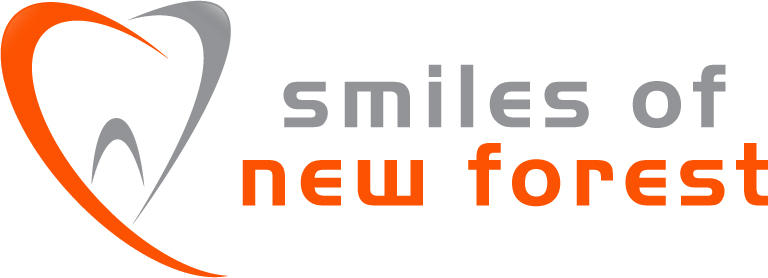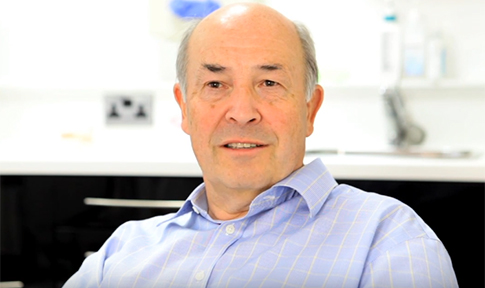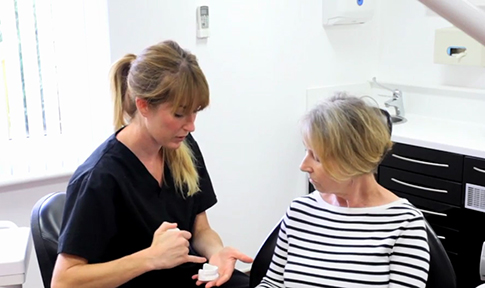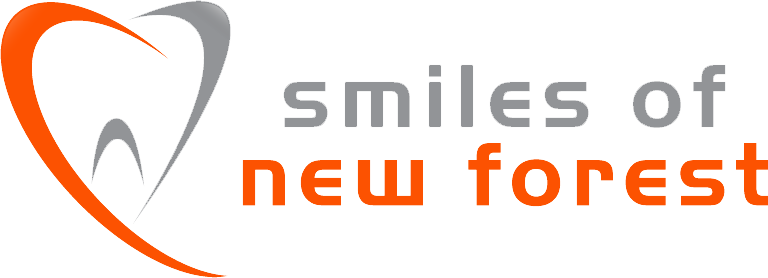Our Specialist Equipment
At the Smiles Studio group, we are one of the first dental practices in UK to have an in-house CT scanner* since 2011 to allow safe and precise implant placement.
*In-House CT Scanner located at our sister Practice
 Our CT Scanner
Our CT Scanner

An Image taken with the CT

What is CT Imaging?
Cone Beam CT ( CBCT ) stands for “cone beam computed tomography” which is a faster and more modern version of computed tomography (CT) imaging. Let’s first understand what CT scanning is.
Computed tomography (CT) imaging, is also referred to as a computed axial tomography or the more widely recognised “CAT” scan. This uses rotating x-ray equipment, combined with a computer, for imaging the body. This technique can produce cross sectional images of body organs and tissues which is ideal for clinicians who need to identify internal structures. CT imaging has the unique ability to differentiate between different types of tissue including detail of soft tissue, bone, muscle and blood vessels. When compared to CT imaging, other techniques are much more limited in the type and clarity of images they can provide.
When considering an x-ray of the head, using basic x-ray techniques, the bone structures of the skull can be viewed. With magnetic resonance imaging (MRI), blood vessels and soft tissue can be viewed, but not of bony structures whereas x-ray angiography can show the blood vessels of the head, but not soft tissue. However, CT imaging of the head provides detail of soft tissues, bones and blood vessels – a distinct advantage over other imaging techniques.
So, what is Cone Beam CT?
CBCT is a modern, compact, faster and safer version of traditional CT. The CBCT device uses a cone shaped X-ray beam which results in a physically smaller scanner, lower radiation dosage and significantly less time needed for scanning. New CBCT scanners easily fit into any dental practice for ease of access by the patient and clinician. Scan times with modern CBCT are typically less than a minute and the radiation dose is up to a hundred times lower than that of a traditional CT scanner.
Compared to x-ray which produces 2-D images, CBCT produces 3-D images which are far more revealing, detailed and hence more useful to the clinician.
What does CBCT equipment look like?
Most of the CBCT scanners are square and often pedestal mounted.
You will stand or sit upright while a C-shaped arm rotates around your head. Within the arm there is an X-ray source and detector (X-ray receiver), which makes one complete 360° rotation for each scan.
While the arm is rotating, it is capturing multiple images of your head from different angles. These images are then reconstructed to create a 3D image of your internal anatomy.
So how does the CT scan help my Dentist?
It allows him to:
- Visualise internal anatomy that can not be diagnosed externally
- Plan treatment and surgery
- Prepare necessary aids
- Assess risk
- Analyse the position and orientation of critical structures, like nerves, teeth roots, previous implants, the sinus and nose
Is it painful?
No, the CBCT scan process is completely painless.
Is it accessible for people with disabilites?
Yes it is accessible
What are Cone Beam scanners used for?
- Oral surgery
- Implant planning (to learn more about implants)
- Orthodontic planning & implant anchorage
- TMJ analysis
- Airway study (sleep apnea)
- Jaw tumors
- Impacted teeth
- Periodontal diseases
- Endodontic anomalies
How much does a scan Cost?
A Cone Beam Scan starts from £150.
*In-House CT Scanner located at our sister Practice





